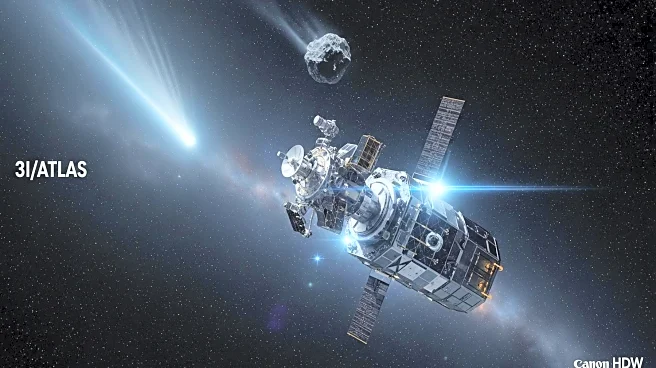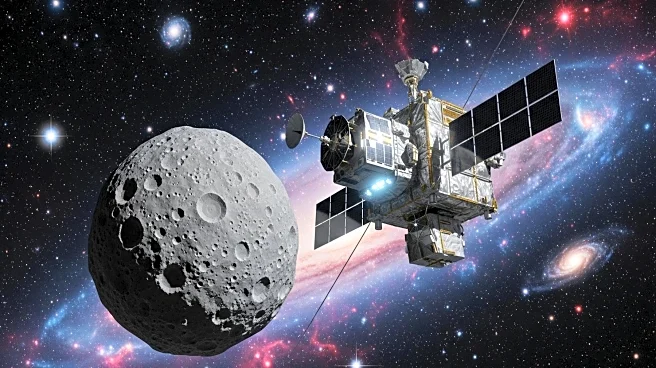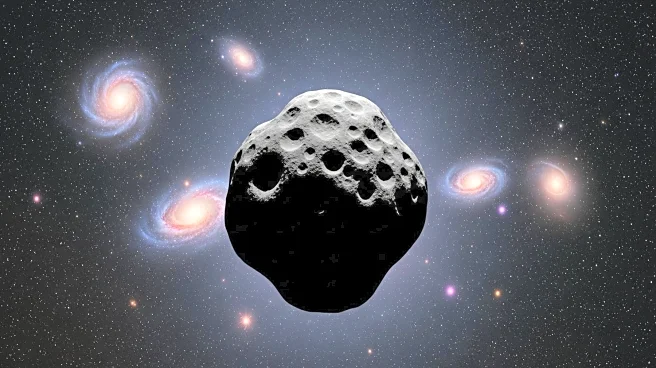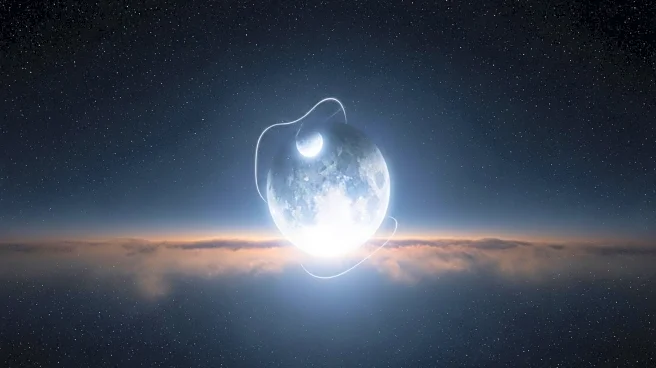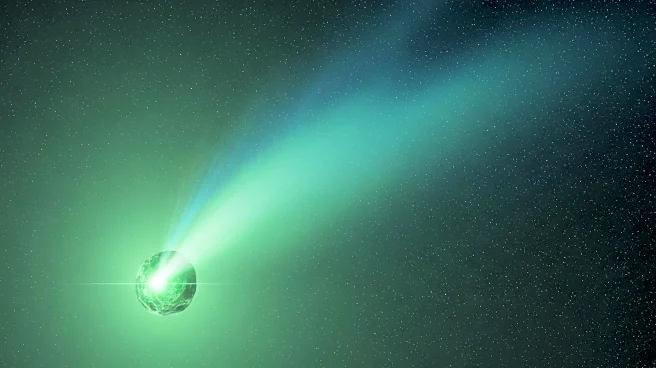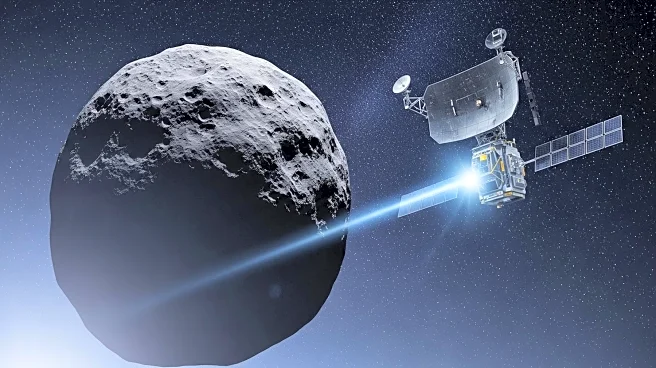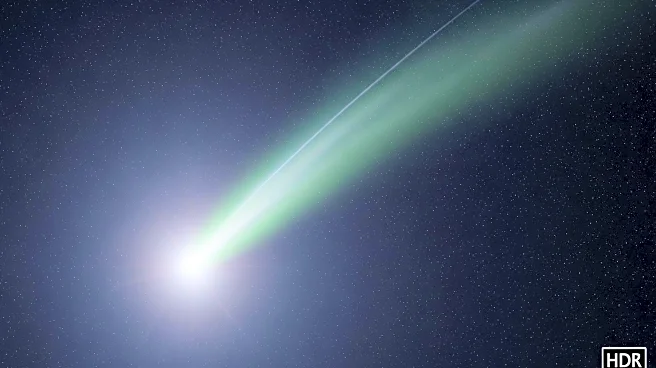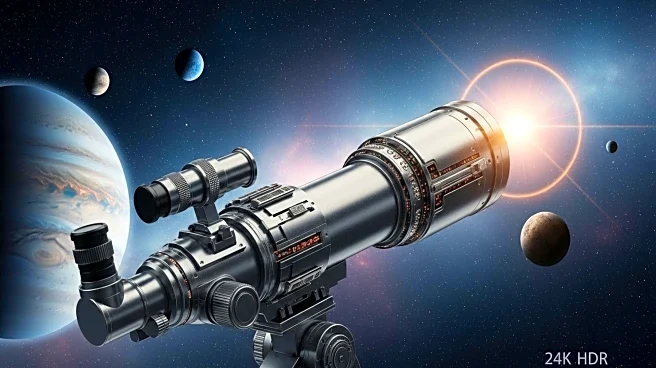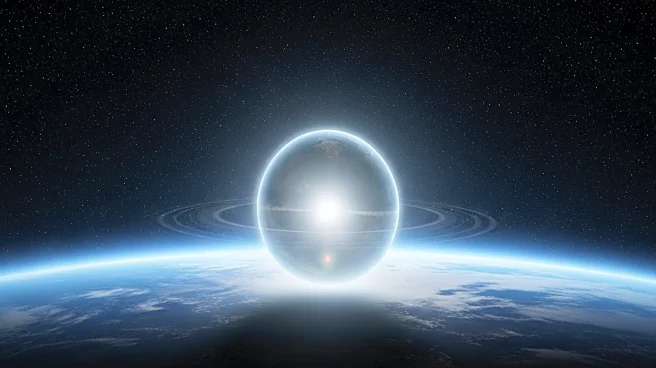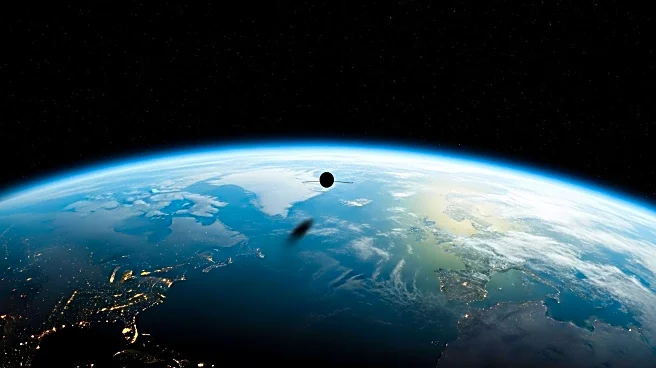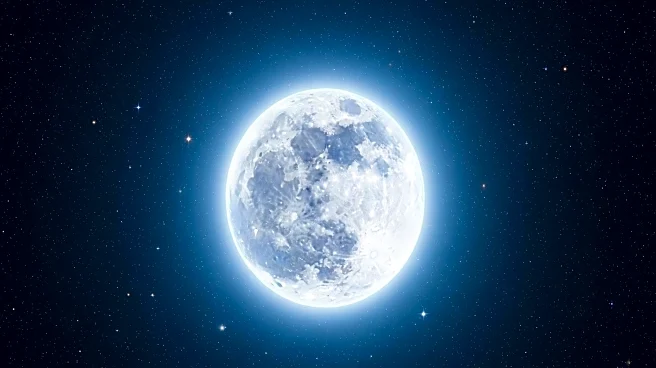What is the story about?
What's Happening?
A new 'quasi-moon', designated 2025 PN7, has been identified in Earth's orbit. This asteroid, which appears to orbit Earth like a moon, actually orbits the sun and has likely been accompanying Earth for decades. The discovery was made using the Pan-STARRS1 telescope in Hawaii. The asteroid is about 62 feet wide and is the smallest and least stable known quasi-satellite of Earth. The findings were published in the Research Notes of the American Astronomical Society, highlighting the asteroid's potential to remain in Earth's vicinity for the next 60 years.
Why It's Important?
The discovery of 2025 PN7 adds to the understanding of Earth's cosmic neighborhood and the dynamics of quasi-moons. These objects provide insights into the gravitational interactions between Earth and nearby celestial bodies. Understanding quasi-moons can help refine models of Earth's gravitational influence and improve predictions of asteroid paths, which is crucial for planetary defense strategies. The study of such objects also contributes to the broader knowledge of the solar system's structure and the behavior of small celestial bodies.
What's Next?
Further observations and studies are needed to confirm the long-term stability of 2025 PN7's orbit and its interactions with Earth. Astronomers will continue monitoring this and other quasi-moons to better understand their trajectories and potential impacts on Earth. This research could lead to improved tracking of near-Earth objects and enhance our ability to predict and mitigate potential asteroid threats.
Beyond the Headlines
The discovery of 2025 PN7 highlights the complexity of Earth's gravitational environment and the presence of transient celestial companions. It underscores the importance of continuous monitoring of space for objects that could pose a threat to Earth. This finding also raises questions about the potential for other undiscovered quasi-moons and their implications for Earth's gravitational dynamics.
AI Generated Content
Do you find this article useful?


